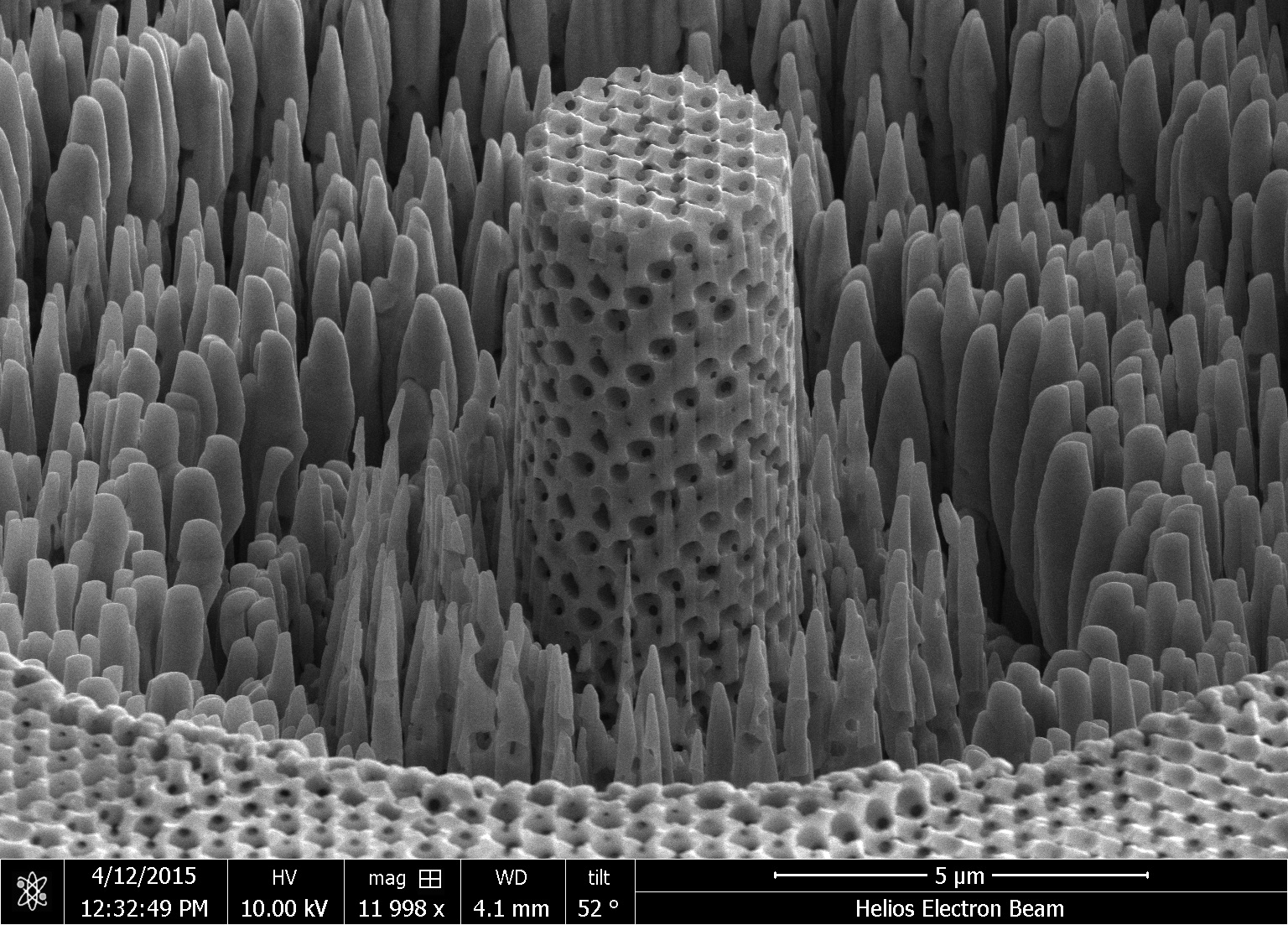A nickel-based material has been developed that has a porous structure similar to wood.
The strength of this metallic wood is close to that of the theoretical strength of nickel due to the presence of nanopillars.
Functionalities can be added to the nickel-based metallic wood leading to the possibility of having the material contain a battery that could power an automobile
Demands for better machinery performance and, in the case of automobiles, steadily higher fuel economy, are leading researchers to evaluate newer materials that combine high strength with low density. One approach has been to work with materials that are cellular in design and contain pores that can be further functionalized.
A previous TLT article discussed the preparation of a metallic material known as a syntactic foam that is less dense than water (
1). A filler consisting of hollow particles is combined with a metal. To produce a material that floats on water, researchers combined a magnesium alloy with the filler, silicon carbide. The mechanical properties of this material are comparable to aluminum and magnesium syntactic foams that exhibit higher densities.
While these materials are potentially appealing for commercial applications, their low densities, which result in low total strengths, limit further use.
Those researchers developing batteries also are seeking to reduce the weight in order to maximize performance. James Pikul, assistant professor in the department of mechanical engineering and applied mechanics at the University of Pennsylvania in Philadelphia, indicates that the desired battery material should have comparable properties to wood. He says, “Wood is a cellular structure made of pores that are needed to enable nutrients to be transported throughout a plant structure such as a tree. Contained within the wood are struts made of cellulose and lignin that impart strength to the natural material.”
Pikul continues, “We have been optimizing ion and electron transport in batteries made from a porous nickel scaffolding structure that can be self-assembled. An appealing aspect of this architecture is that, in addition to improving battery performance, it combines high strength with low density.”
A comparable material that is considered to be a metallic wood has now been prepared.
Nanopillars
Pikul and his colleagues have developed a new material that exhibits comparable strength to titanium yet has the density of water. He says, “We took advantage of the self-assembled nickel scaffolding from our battery work to produce the material in the form of an inverse opal.”
Preparation of the inverse opal involved electrodeposition of nickel into the voids of polystyrene spheres that were self-assembled onto a gold/chromium coated substrate and sintered at a temperature of 96 C. After etching the polystyrene with tetrahydrofuran, a material containing interconnected spherical pores in a face-centered cubic orientation was created.
The key to the material’s strength is the presence of nanopillars. Pikul says, “Nanopillars show exceptional yield strength that usually continues to increase as the diameter decreases. This occurs because the mechanism of deformation changes and (the yield strength) can get to the point where it reaches the theoretical strength of the metal. The strength of our material is in the 8-10 gigapascal range while the theoretical strength of nickel is between 10-12 gigapascals. In contrast, nickel produced at the macroscale exhibits a maximum strength of 1 or 2 gigapascals. One other factor is that macroscale materials contain random defects that reduce their strength.
A scanning electron microscope image of the material is shown in Figure 1. Prominently present in the center of the image is a nanopillar that Pikul indicates is approximately three microns in diameter.
 Figure 1. A nanopillar, shown in the center of this image, of the metallic wood porous structure is the reason why this nickel-based material exhibits exceptionally high strength. (Figure courtesy of the University of Pennsylvania.)
Figure 1. A nanopillar, shown in the center of this image, of the metallic wood porous structure is the reason why this nickel-based material exhibits exceptionally high strength. (Figure courtesy of the University of Pennsylvania.)
The nickel-based inverse opal material was evaluated for mechanical structure using established nanoindentation and micropillar compression measurements. Pikul says, “Measurement of the mechanical properties of our inverse opal material proved to be experimentally tricky.”
The researchers also worked with a rhenium-nickel alloy (80% rhenium by weight) as a means to increase the mass, solids volume fraction and strut diameter of the material. Pikul says, “Rhenium is a material that is very dense and as a consequence of its high melting temperature, primarily used in high temperature alloys.”
Pores represent 80% of this nickel-based inverse opal material. Pikul believes that functionalities can be added to the pores without reducing strength. This can lead to some intriguing possibilities. Pikul says, “We believe that the components of a battery can fill the pores to provide both strength and store energy. This leads to the potential for using the nickel-based inverse opal material as a structural material in an automobile. For example, the material could be placed in the panel of a car door and power the electric engine.”
Pikul also envisions the possibility of filling the pores of the material with a lubricant. He says, “Introduction of a solid lubricant into the pores could provide a material that can impart lower friction and wear in a specific machine.”
The challenge for the researchers is to find a cost-effective way to scale-up the manufacture of the nickel-based inverse opal material for commercial applications. Pikul says, “Current techniques for manufacturing materials at the macroscale utilize well-known techniques such as injection molding. There is no built-in expertise to manufacture nanomaterials. New methods will need to be devised.”
Additional information on this research can be found in a recent article (
2) or by contacting Pikul at
pikul@seas.upenn.edu.
REFERENCES
1.
Canter, N. (2015), “Lightweight metal matrix syntactic foam,” TLT,
71 (8), pp. 12-13.
2.
Pikul, J., Ozerinc, S., Liu, B., Zhang, R., Braun, P., Deshpande V. and King, W. (2019), “High strength metallic wood from nanostructured nickel inverse opal materials,”
Scientific Reports,
9, Article Number: 719.